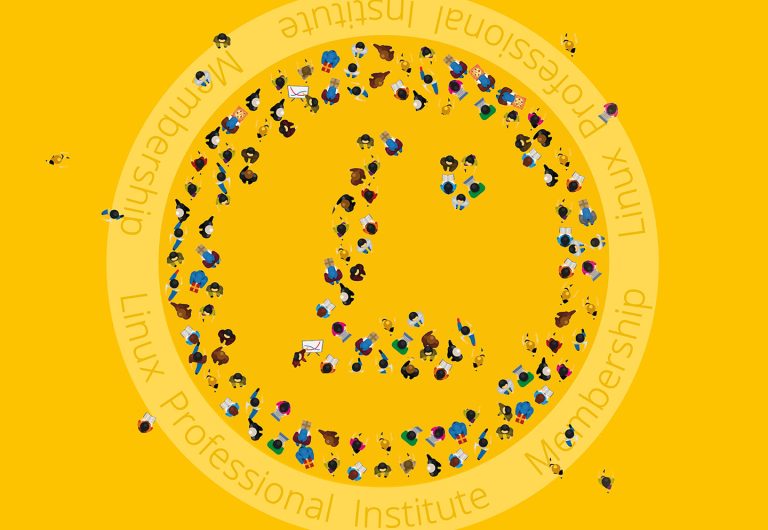Benefits of Becoming an LPI Member

Recently, Linux Professional Institute (LPI) launched a formal membership program for holders of its professional level certifications. This program includes holders of LPIC-1 certifications or higher, as well as those certified in the growing list of Open Technology topics.
Membership allows certificate holders to incrementally update their knowledge and prolong the lives of their certifications. It also changes the governance model of LPI and gives the ultimate authority over LPI to the people that it certifies. Since this program is new, there is an option for holders of inactive certifications, too. Read on for more details.
Impetus for the membership program
Incorporating as a non-profit organization in Canada in 1999 required LPI to define a unit of membership (with voting control) for itself, in contrast to for-profit companies that offer shares for this purpose. Initially, these members were the founding open source professionals and advocates that championed LPI’s formation. However, the intention was always to hand over the reins of the organization to the certification holders through the mechanism of membership.
It has taken some time and a lot of work behind the scenes, but that goal was institutionalized in LPI’s bylaws and culminated in the launch of the membership program this past summer.
What does it mean to be a member of LPI?
For LPI, the new program means that certification holders that become members are now the ones who vote for the Board of Directors. You don’t have to be a member to run for a board position, though, since a board needs a diverse set of skills to be effective. Board elections are an annual occurrence along with an Annual General Meeting (AGM) of all members.
To make membership meaningful and appealing to certification holders, the board wanted a focus other than members’ role in governance. This structural change also afforded LPI the opportunity to transition from getting people their first or next job to helping more broadly in their careers and communities. This objective explains the various initiatives that have already launched and are being developed.
On a practical level, membership offers long-term benefits to those who obtained certifications. No one needs to become a member to maintain their certifications. The advantage of membership is that you don’t have to wait for your certification to expire and then retake the tests. Instead, you can keep your knowledge and your certification up to date by engaging in regular, small-scale activities that offer you a kind of continuing education credit called Professional Development Units (PDUs).
Here is the background. Certifications, like university and college degrees, demonstrate a level of knowledge and experience at a fixed point in time. While they are extremely valuable, they also have a shelf life. At the rate in which technology changes, this value can diminish quickly. Fortunately, LPI certifications age well.
However, as with most professions, LPI expects certification holders to keep and update their knowledge along with changes in the field. This can be done through continuing education, as well as the use and expansion of the skills and knowledge that accompanied earlier training and credentials.
This is where the membership program steps in. Members can demonstrate their growth by engaging in education, work experience in the field related to the certification, and community participation to earn PDUs.
Active certification holders can join before submitting any PDUs, but will need to submit PDUs as part of their member obligations by the end of a three-year cycle. This cycle commences with the membership. Holders of inactive certifications will need to submit some PDUs before joining in order to demonstrate that they are still active users of open source software. After joining, the same three-year PDU cycle will start as well.
Thus, PDUs play a critical role in maintaining the value of an LPI certification by allowing a certification holder to demonstrate a combination of experience, credentials and continuing education. The idea of a membership option without the PDUs was considered but rejected because members would have to be expunged if their certifications became inactive. Furthermore, if we didn’t require PDUs, we’d have to differentiate between the folk that have a certification and may have exceeded those expectations from members who actively demonstrate their growth beyond the certifications. This would get confusing.
LPI members who want to undertake high-level campaigns to help the free and open source community can also join our Member Engagement Committee. This may also be a good step toward a board position.
Is It worth becoming a member?
If you just want to extend the active date of your certification, there’s little need to join as a member. Nothing is changing in the existing certification programs, including the five-year expiration date of certifications. They are still publicly displayable and a testament to your skills. Plus, five years should be plenty of time to leverage the value of the certification or attain a higher level credential.
Afterward, if you ever need to dust off your certifications, you could become a member for one year. That will reactivate the cert for whatever needed purpose. The cost would be about 35% of the cost of taking one exam and less than 20% of the cost of retaking LPIC-1. In addition, if you had an LPIC-2 go inactive and wanted to get LPIC-3 certification, reactivating the LPIC-2 and carrying on would be much less expensive than retaking LPIC-1 and LPIC-2. Even the 3 year membership is 90% of the cost of an exam and 45% of the cost of retaking LPIC-1.
However, our intention is to make the economic value to the member exceed the costs of joining irrespective of the extensions to the certifications’ active dates. Thus, we have added direct benefits in the form of discounts and other perqs from us and our partners.
Members will shape the future of LPI
We hope that people who choose membership will take seriously their role in governance. Ultimately, it is up to the members to (help) shape LPI going forward. If you think there’s something more that LPI, as an organization, should be doing (or should stop), please get involved. Or at least come to the AGM and shoot your mouth off for a while. Hmm, maybe that should be listed as a member benefit, too.
To learn more or or ask questions, join us at the next Membership AMA webinar or watch the recording from our last one.
